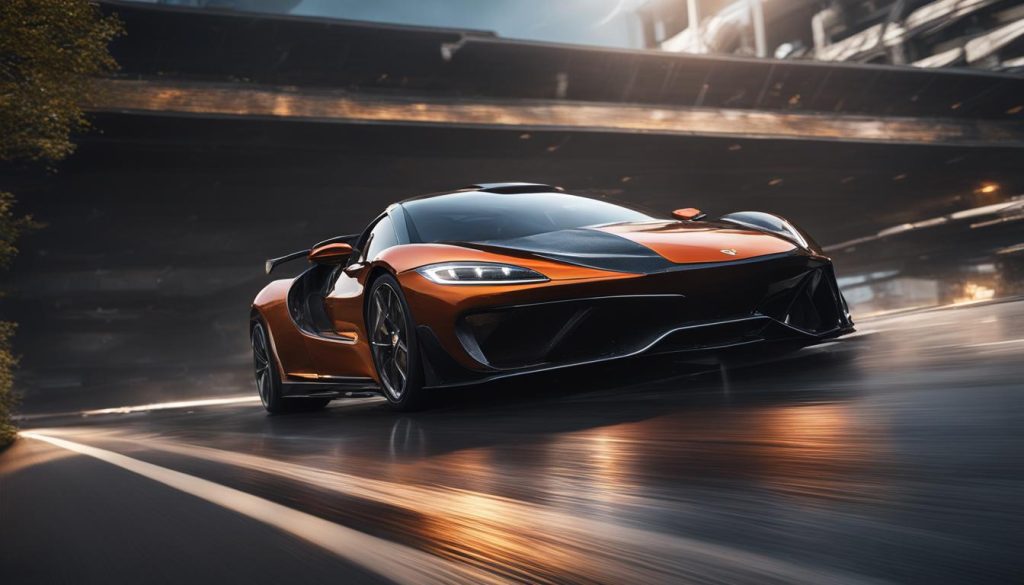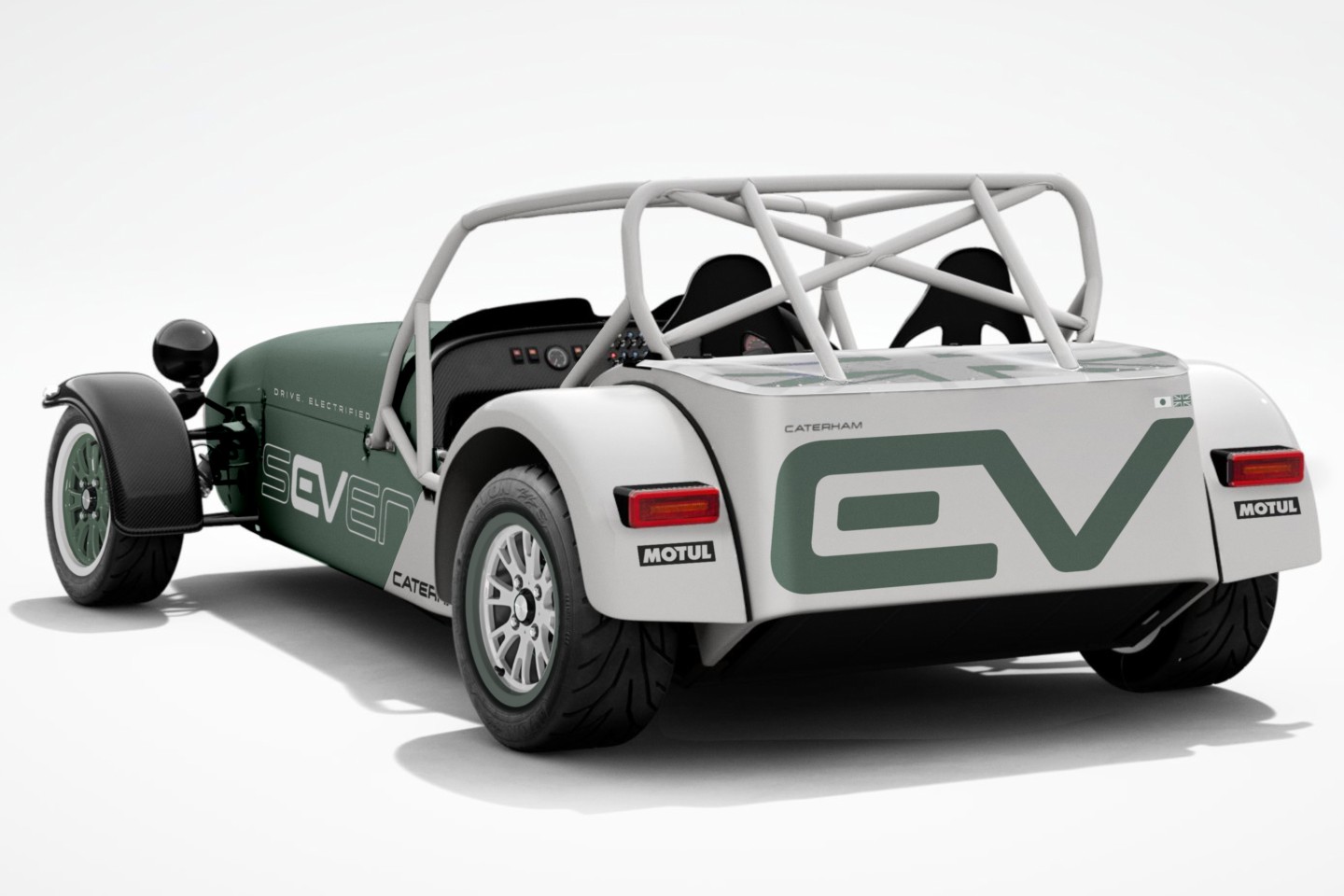
The notion of an EV sports car is one we’ll grow increasingly familiar with over the coming years. Alpine and Lotus may now be forging their own paths, but it seems unlikely either will give up on the idea, plus there’s the Porsche Boxster/Cayman pair to think about as well. Now there’s one more to add to the list: the Caterham EV Seven.
Well, sort of. What’s really important to note for the moment is that this car is what Caterham CEO Bob Laishley calls a toe in the water for an electric Seven; it’s not going to be on the configurator imminently or clogging up track day paddocks this summer. For the moment, the concept is a feasibility study, assessing how the current technology can be made to work with the ethos of a Seven and gauging demand for a future electric version. It previews what Caterham would like an EV Seven to be, according to the boss, not a car that’ll be rolling out of the new factory in the coming months.
In the same way that an ICE Seven offers up its thrills in an unconventional fashion (as the industry gets heavier and more high tech, it remains light and simple), so an electric version must do the same. It can’t be heavy and it won’t be heavy; this car has been benchmarked against the 485 Seven sold in Europe and Japan, with a target weight of just 70kg more than that car to keep it under 700kg. Crucially, too, it’ll have a weight distribution within two per cent of the ICE equivalent. “We’re never going to launch a one-tonne Seven” added Laishley, “we’d rather not do it”. Predictions are for a 0-60mph time of four seconds and a 130mph top speed, keeping the EV Seven in line with the 485. In fact, plenty about the car will be familiar, including Avon ZZR tyres, Bilstein dampers from the 420 Cup, and teeny-tiny 13-inch wheels. This isn’t an Ariel Hipercar take on the electric sports car.
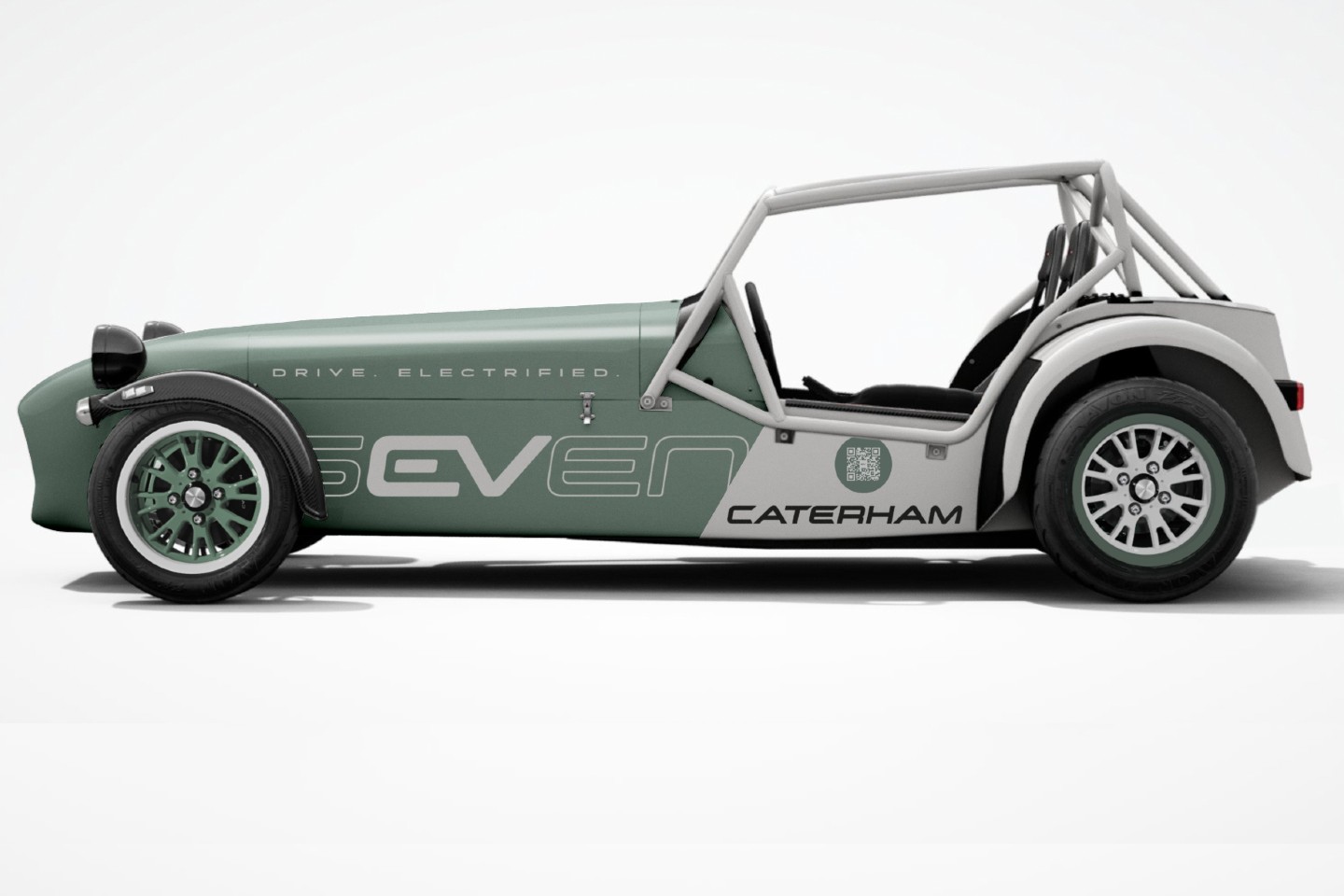

Things are very different, of course, under the bonnet, where Caterham has enlisted the help of Swindon Powertrain, well-known race engine builders and famously involved with the Seven JPE almost 30 years ago. The aim of this project is nothing if not ambitious, with the EV Seven pitched very much as a track car. Caterhams aren’t cruisers at the best of times, and it doesn’t suit electric either; far better to make use of the explosive performance in a suitable environment. Caterham’s brief for Swindon was a powertrain able to withstand hourly cycles of circuit driving made up of 20 minutes flat out, 15 minutes charging, then another 20 minutes terrorising supercars. Anyone who’s given it their all in a Caterham with more than 300hp per tonne will surely be content with 40 minutes out of every hour behind the wheel – they do rather demand your attention. And yes, charging an EV at a UK circuit isn’t exactly easy for the moment, another reason why the Seven is a tech test bed for the moment rather than a fully-fledged production Caterham.
The plan presented some challenges for Swindon, of course, because flat-out driving (including brake regeneration) followed by rapid charging – the Seven can accept up to 152kW – is a real nightmare for battery degradation. To mitigate that, the Caterhams 51kWh battery pack has a useable capacity of around 40kWh, and it’s immersion-cooled, meaning that the Motul-supplied dielectric fluid is in direct contact with the cells, which should mean better thermal management in both charge and discharge cycles. Vital for the Seven’s intended use, basically, as it’s never really going to get an easy minute. Immersion cooling is described by Caterham as being ‘at the forefront for battery electric vehicles’ and has typically only been seen on supercomputers until now (exactly what PH will need to deal with the forum comments).
In addition, Swindon had to compete with the simple fact that the Caterham Seven was never, ever designed to have an electric powertrain – and it’s pretty snug in there at the best of times. The concept uses a wider S5 chassis as its base and, with some adjustments, the battery pack goes in where the engine and gearbox once lived. At the back of the car sits a bespoke version of SP’s E-Axle and a modified version of its High Power Density electric motor. Back when HPD was launched there was a render of it mounted in a Seven-style sports car – now we have something approaching the real thing. The upgrade has greatly increased potency; what was a 110hp electric motor now offers up 240hp, as well as 184lb ft. A limited-slip diff is also employed at the rear axle, for the most authentic Seven experience. Drive reaches those dinky rear tyres via a single-speed, two-stage reduction gear.
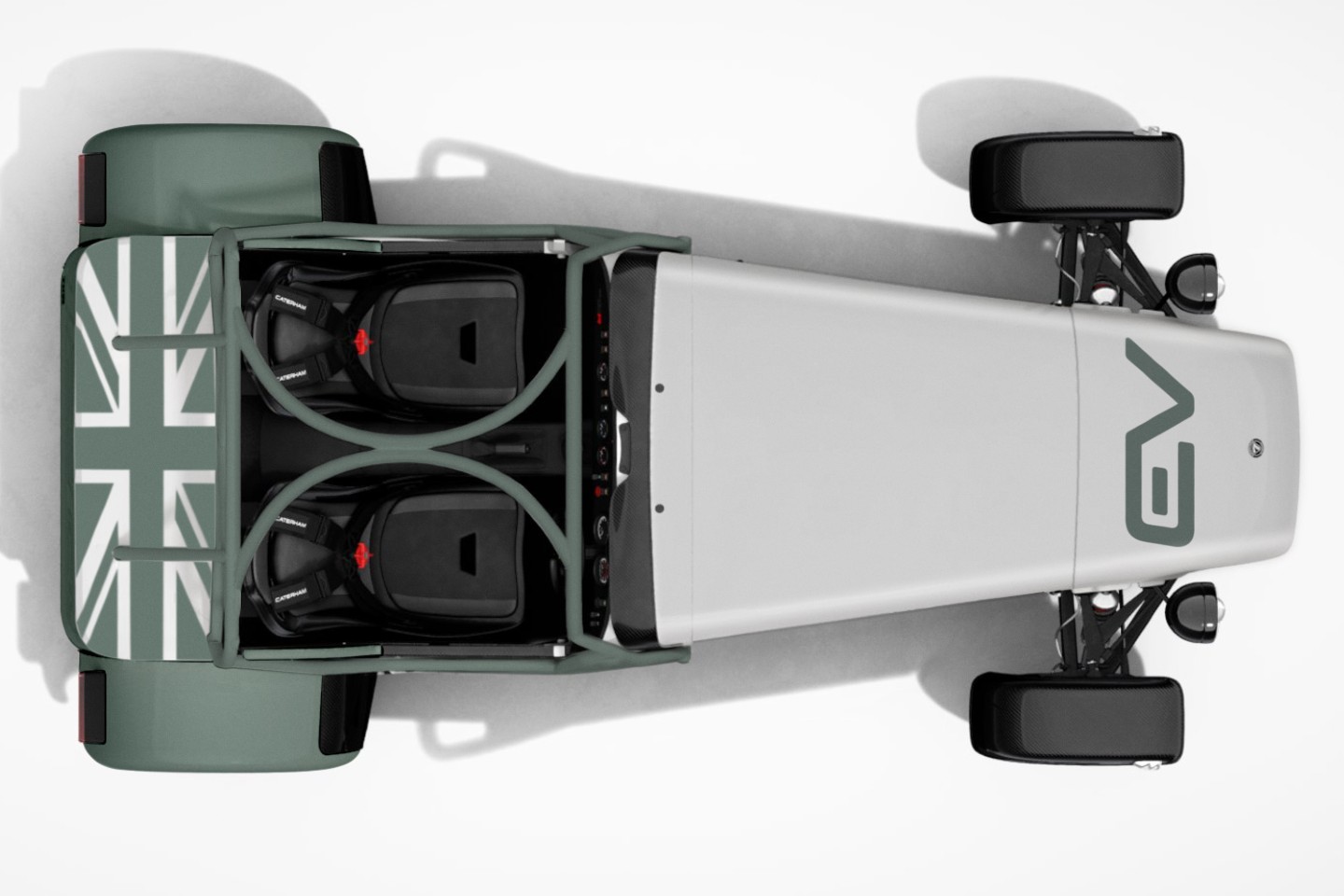
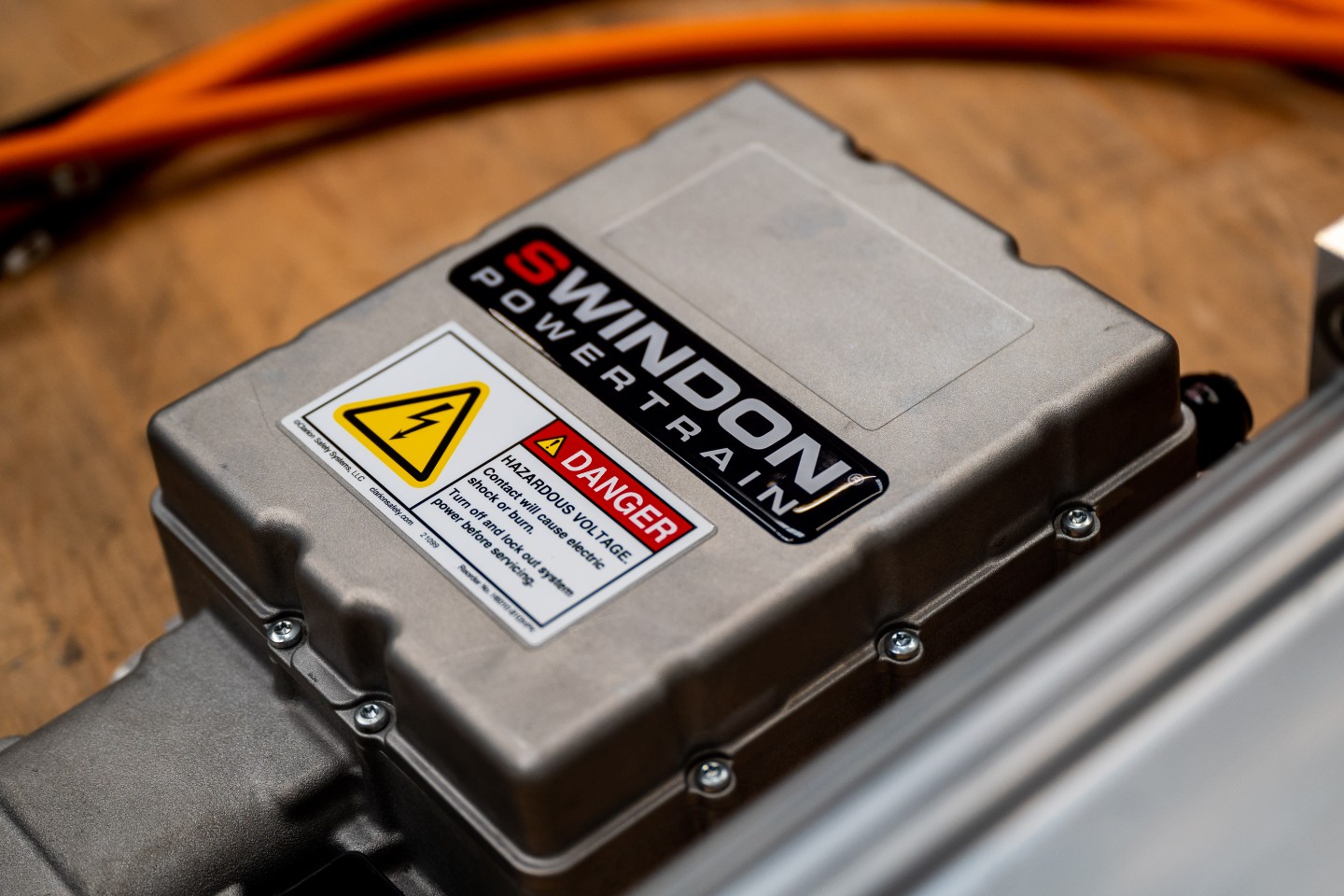
About the only thing we didn’t see in an afternoon at Swindon Powertrain was the completed concept itself. But it’s coming, we’re told, with a car due at Festival of Speed in the summer – so now you can impress your mates with all the tech details of what lurks beneath the ‘Drive. Electrified’ livery. Undoubtedly there’s a very knowledgeable and dedicated team working on this project; the engineering ins and outs of electrified powertrains are something way beyond this writer’s understanding, but the enthusiasm for working on something new and something innovative – however challenging – was plain to see.
Swindon Powertrain MD Raphaël Caillé added: “The targets we’ve been set for low vehicle weight and battery charging speed are undoubtably ambitious, but the use of cutting-edge immersion cooled battery technology along with our own powertrain components means we’re able to develop an electric Seven that maintains the core values of the original.” Which clearly sounds like an intriguing driver’s car, if nothing else; as soon as there’s a chance to get behind the wheel – and there very much is a plan to get finished concepts on track – we will.
“We do not have plans to put EV Seven into production at this stage – it’s a test bed to see how well an EV powertrain works for our customers’ specific use cases,” noted Caterham boss, Laishley. “We’re doing this project with our eyes wide open so that we can learn how to deliver the specific Caterham vehicle attributes necessary for a Seven: lightweight, simple and fun to drive. We’re going to bring this to market at the right time, when the future generation of battery technology allows it, and that’s why now is the time for us to trial the concept.” So not now. But definitely not never, either. Which feels about right for a niche manufacturer with an ambitious new owner. Expect to hear more at Goodwood in a few weeks, and see a little bit of Caterham history made as the first EV Seven heads up the hill.
#Caterham #concept #breaks #cover



